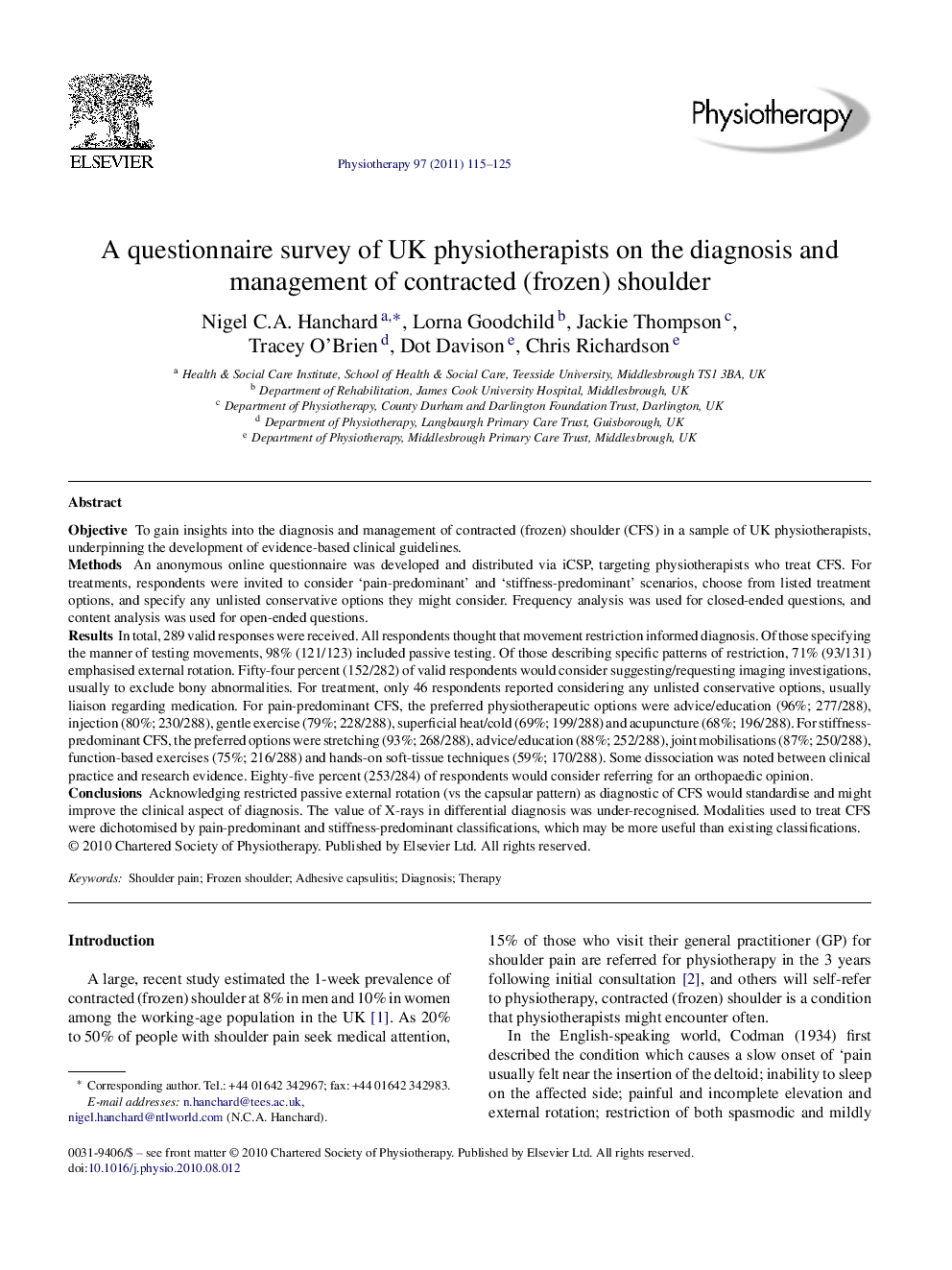| کد مقاله | کد نشریه | سال انتشار | مقاله انگلیسی | نسخه تمام متن |
|---|---|---|---|---|
| 2627830 | 1136111 | 2011 | 11 صفحه PDF | دانلود رایگان |

ObjectiveTo gain insights into the diagnosis and management of contracted (frozen) shoulder (CFS) in a sample of UK physiotherapists, underpinning the development of evidence-based clinical guidelines.MethodsAn anonymous online questionnaire was developed and distributed via iCSP, targeting physiotherapists who treat CFS. For treatments, respondents were invited to consider ‘pain-predominant’ and ‘stiffness-predominant’ scenarios, choose from listed treatment options, and specify any unlisted conservative options they might consider. Frequency analysis was used for closed-ended questions, and content analysis was used for open-ended questions.ResultsIn total, 289 valid responses were received. All respondents thought that movement restriction informed diagnosis. Of those specifying the manner of testing movements, 98% (121/123) included passive testing. Of those describing specific patterns of restriction, 71% (93/131) emphasised external rotation. Fifty-four percent (152/282) of valid respondents would consider suggesting/requesting imaging investigations, usually to exclude bony abnormalities. For treatment, only 46 respondents reported considering any unlisted conservative options, usually liaison regarding medication. For pain-predominant CFS, the preferred physiotherapeutic options were advice/education (96%; 277/288), injection (80%; 230/288), gentle exercise (79%; 228/288), superficial heat/cold (69%; 199/288) and acupuncture (68%; 196/288). For stiffness-predominant CFS, the preferred options were stretching (93%; 268/288), advice/education (88%; 252/288), joint mobilisations (87%; 250/288), function-based exercises (75%; 216/288) and hands-on soft-tissue techniques (59%; 170/288). Some dissociation was noted between clinical practice and research evidence. Eighty-five percent (253/284) of respondents would consider referring for an orthopaedic opinion.ConclusionsAcknowledging restricted passive external rotation (vs the capsular pattern) as diagnostic of CFS would standardise and might improve the clinical aspect of diagnosis. The value of X-rays in differential diagnosis was under-recognised. Modalities used to treat CFS were dichotomised by pain-predominant and stiffness-predominant classifications, which may be more useful than existing classifications.
Journal: Physiotherapy - Volume 97, Issue 2, June 2011, Pages 115–125